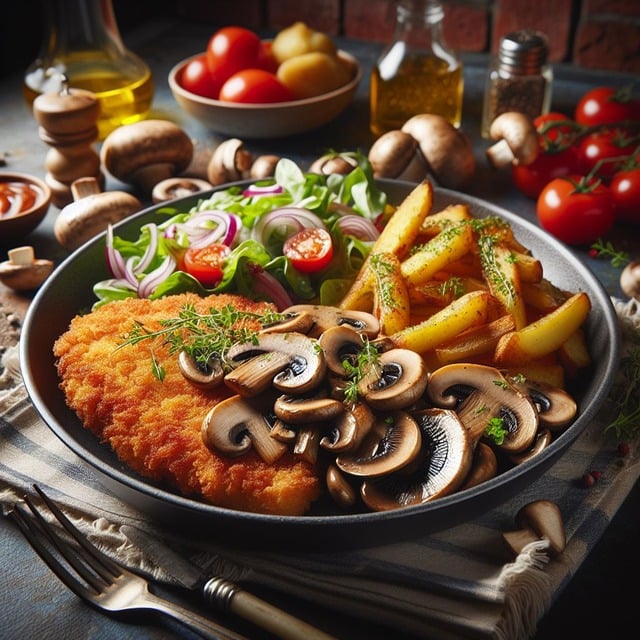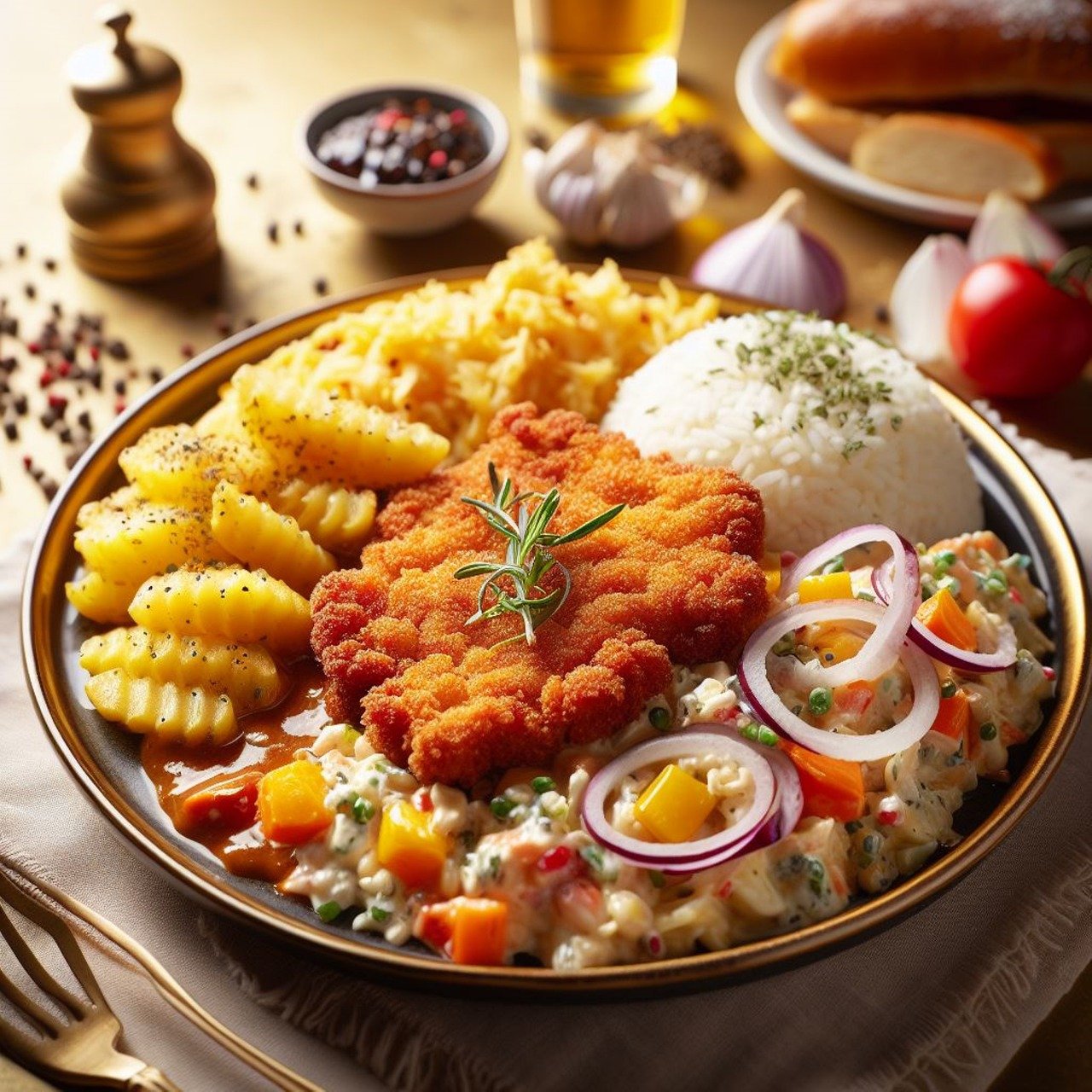Table of Contents
The Role of Portion Control in Weight Loss Meal Plans
Meal Prep Tips to Stay on Track with Your Weight Loss Goals
How to Create a Balanced Meal Plan for Optimal Weight Loss
Top 10 Foods to Include in Your Weight Loss Meal Plan
Effective Meal Planning Strategies for Weight Loss
Q&A
“Fuel Your Success: Tailored Meal Plans for Optimal Weight Loss”
Meal plans designed to maximize weight loss results are structured dietary strategies that focus on optimizing nutrient intake, controlling portion sizes, and promoting healthy eating habits. These plans typically emphasize a balanced intake of macronutrients—proteins, carbohydrates, and fats—while prioritizing whole, unprocessed foods such as lean proteins, vegetables, fruits, whole grains, and healthy fats. By creating a calorie deficit, meal plans aim to facilitate weight loss while ensuring that the body receives essential nutrients for overall health and well-being. Additionally, these plans often incorporate regular meal timing and mindful eating practices to support sustained energy levels and prevent overeating. Tailored to individual needs and goals, effective meal plans can be a powerful tool in achieving and maintaining a healthy weight.
The Role of Portion Control in Weight Loss Meal Plans
When embarking on a weight loss journey, one of the most crucial elements to consider is portion control. While it might be tempting to focus solely on the types of foods you consume, the amount you eat plays an equally significant role in achieving your weight loss goals. Understanding and implementing portion control can make a substantial difference in your overall success, and it doesn’t have to be a daunting task.
To begin with, portion control helps you manage your calorie intake more effectively. Even healthy foods can contribute to weight gain if consumed in large quantities. For instance, nuts and avocados are packed with nutrients and healthy fats, but they are also calorie-dense. By being mindful of portion sizes, you can enjoy these foods without overindulging and inadvertently sabotaging your weight loss efforts.
Moreover, portion control can help you develop a better relationship with food. When you pay attention to how much you’re eating, you become more attuned to your body’s hunger and fullness cues. This mindfulness can prevent overeating and help you recognize when you’re eating out of habit or emotion rather than genuine hunger. Over time, this practice can lead to more sustainable eating habits and long-term weight management.
In addition to fostering mindfulness, portion control can also make your meal plans more flexible and enjoyable. Instead of feeling restricted by a rigid diet, you can incorporate a variety of foods in moderation. This approach allows you to savor your favorite treats occasionally without feeling guilty or derailing your progress. For example, enjoying a small piece of chocolate or a handful of chips can satisfy your cravings without leading to a binge.
Transitioning to practical tips, one effective strategy for portion control is using smaller plates and bowls. Research has shown that people tend to eat less when they use smaller dishware because it creates the illusion of a fuller plate. This simple trick can help you reduce your portion sizes without feeling deprived. Additionally, measuring your food with cups, spoons, or a kitchen scale can provide a clearer understanding of appropriate serving sizes, especially when you’re just starting out.
Another helpful tactic is to pre-portion your snacks and meals. Instead of eating directly from a large bag or container, divide your food into individual servings. This method not only prevents mindless munching but also makes it easier to track your calorie intake throughout the day. Meal prepping can also be a game-changer, as it allows you to plan and portion your meals in advance, ensuring you stay on track even during busy days.
Furthermore, incorporating more fruits and vegetables into your meals can naturally aid in portion control. These foods are low in calories but high in volume, meaning they can fill you up without contributing to weight gain. By loading half your plate with vegetables, you can enjoy a satisfying meal while keeping your calorie intake in check.
In conclusion, portion control is a vital component of any effective weight loss meal plan. By being mindful of how much you eat, you can better manage your calorie intake, develop healthier eating habits, and enjoy a more flexible and enjoyable diet. Simple strategies like using smaller plates, measuring your food, and pre-portioning snacks can make a significant difference in your weight loss journey. Embracing these practices can help you achieve your goals and maintain your progress in the long run.
Meal Prep Tips to Stay on Track with Your Weight Loss Goals
Meal prepping can be a game-changer when it comes to staying on track with your weight loss goals. By planning and preparing your meals in advance, you can ensure that you always have healthy, portion-controlled options at your fingertips. This not only helps you avoid the temptation of unhealthy snacks and fast food but also saves you time and stress during the week. To get started, consider these meal prep tips that can help you maximize your weight loss results.
First and foremost, it’s essential to plan your meals for the week. Take some time to sit down and create a menu that includes a variety of nutritious foods. Incorporate lean proteins, whole grains, and plenty of fruits and vegetables to ensure you’re getting a balanced diet. Once you have your menu, make a detailed shopping list to ensure you have all the ingredients you need. This will help you avoid last-minute trips to the grocery store and reduce the likelihood of impulse purchases.
When it comes to meal prepping, batch cooking is your best friend. Choose a day of the week, such as Sunday, to prepare large quantities of food that can be portioned out and stored for the week ahead. For example, you can cook a big pot of quinoa or brown rice, roast a variety of vegetables, and grill several chicken breasts. By having these staples ready to go, you can easily mix and match them to create different meals throughout the week.
Another helpful tip is to invest in quality storage containers. Opt for containers that are microwave-safe, dishwasher-safe, and leak-proof to make your meal prep process as seamless as possible. Additionally, consider using containers with compartments to keep different components of your meals separate. This can help maintain the freshness and flavor of your food.
Portion control is a crucial aspect of weight loss, and meal prepping can help you manage your portions more effectively. Use a kitchen scale or measuring cups to portion out your meals according to your dietary needs. This can prevent overeating and ensure you’re consuming the right amount of calories to support your weight loss goals. Additionally, pre-portioning snacks, such as nuts or fruit, can help you avoid mindless munching throughout the day.
Variety is key to staying motivated and satisfied with your meal plan. While it can be tempting to stick to the same meals week after week, this can lead to boredom and make it harder to stay on track. Experiment with new recipes and ingredients to keep things interesting. For example, try incorporating different spices and herbs to add flavor without extra calories. You can also switch up your protein sources by including options like tofu, beans, or fish.
Staying organized is another important aspect of successful meal prepping. Keep a calendar or planner to track your meals and snacks for the week. This can help you stay accountable and ensure you’re sticking to your plan. Additionally, consider setting reminders on your phone to prompt you to eat at regular intervals. This can help prevent hunger and reduce the likelihood of reaching for unhealthy options.
Finally, don’t forget to be kind to yourself. Weight loss is a journey, and it’s important to celebrate your progress along the way. If you have a setback or indulge in a treat, don’t let it derail your efforts. Instead, focus on getting back on track with your next meal. By staying consistent with your meal prep and maintaining a positive mindset, you’ll be well on your way to achieving your weight loss goals.
How to Create a Balanced Meal Plan for Optimal Weight Loss
Creating a balanced meal plan for optimal weight loss can seem daunting, but with a few simple guidelines, you can set yourself up for success. The key is to focus on nutrient-dense foods that keep you full and satisfied while providing the essential vitamins and minerals your body needs. By incorporating a variety of food groups and paying attention to portion sizes, you can create a meal plan that not only helps you shed pounds but also promotes overall health.
To begin with, it’s important to understand the role of macronutrients—proteins, carbohydrates, and fats—in your diet. Proteins are crucial for muscle repair and growth, and they also help keep you feeling full longer. Incorporating lean protein sources such as chicken, fish, tofu, and legumes into your meals can make a significant difference. Carbohydrates, often misunderstood, are essential for energy. Opt for complex carbs like whole grains, fruits, and vegetables, which provide sustained energy and are rich in fiber. Healthy fats, found in foods like avocados, nuts, and olive oil, are vital for brain health and hormone regulation. Balancing these macronutrients in each meal can help you maintain energy levels and avoid the pitfalls of extreme hunger.
Transitioning to the practical aspects of meal planning, start by setting realistic goals. Aim for a gradual weight loss of 1-2 pounds per week, which is considered safe and sustainable. Begin by calculating your daily caloric needs based on your age, gender, weight, height, and activity level. There are numerous online calculators that can help with this. Once you have your target calorie intake, you can distribute these calories across your meals and snacks throughout the day.
Next, consider meal prepping as a strategy to stay on track. Preparing meals in advance can save time and reduce the temptation to opt for unhealthy convenience foods. Start by planning your meals for the week, making a shopping list, and dedicating a few hours to cook and portion out your meals. This way, you have healthy options readily available, making it easier to stick to your plan.
Incorporating a variety of foods is also essential. Eating the same meals repeatedly can lead to nutrient deficiencies and boredom, which might derail your efforts. Experiment with different recipes and try to include a rainbow of fruits and vegetables in your diet. This not only ensures a wide range of nutrients but also makes your meals more visually appealing and enjoyable.
Hydration is another critical component of a balanced meal plan. Drinking plenty of water throughout the day can help control hunger and support your metabolism. Sometimes, our bodies can mistake thirst for hunger, leading to unnecessary snacking. Aim for at least eight glasses of water a day, and consider drinking a glass before meals to help with portion control.
Lastly, don’t forget to listen to your body. Mindful eating practices, such as paying attention to hunger and fullness cues, can prevent overeating and help you develop a healthier relationship with food. Take your time to savor each bite, and avoid distractions like watching TV while eating.
In conclusion, creating a balanced meal plan for optimal weight loss involves understanding macronutrients, setting realistic goals, meal prepping, incorporating variety, staying hydrated, and practicing mindful eating. By following these guidelines, you can create a sustainable and enjoyable meal plan that supports your weight loss journey and overall well-being. Remember, the goal is not just to lose weight but to develop healthy habits that last a lifetime.
Top 10 Foods to Include in Your Weight Loss Meal Plan
When embarking on a weight loss journey, choosing the right foods can make all the difference. Incorporating nutrient-dense, low-calorie options into your meal plan can help you shed those extra pounds while still feeling satisfied and energized. To help you get started, here are the top 10 foods to include in your weight loss meal plan.
First and foremost, leafy greens such as spinach, kale, and Swiss chard are essential. These vegetables are incredibly low in calories and high in fiber, which helps keep you full longer. Additionally, they are packed with vitamins, minerals, and antioxidants that support overall health. Adding a generous serving of leafy greens to your meals can be as simple as tossing them into a salad, blending them into a smoothie, or sautéing them as a side dish.
Next, consider incorporating lean proteins like chicken breast, turkey, and tofu. Protein is crucial for weight loss because it helps build and maintain muscle mass, which in turn boosts your metabolism. Moreover, protein-rich foods have a high thermic effect, meaning your body burns more calories digesting them compared to fats and carbohydrates. Grilling, baking, or stir-frying these proteins can make for delicious and satisfying meals.
Another excellent addition to your meal plan is whole grains such as quinoa, brown rice, and oats. Unlike refined grains, whole grains are rich in fiber and nutrients, which help regulate blood sugar levels and keep you feeling full. Swapping out white rice or pasta for their whole-grain counterparts can make a significant impact on your weight loss efforts.
Incorporating healthy fats is also vital for a balanced diet. Avocados, nuts, and seeds are excellent sources of monounsaturated and polyunsaturated fats, which can help reduce inflammation and improve heart health. These fats also promote satiety, preventing overeating. Adding a handful of nuts to your yogurt or sprinkling seeds on your salad can be an easy way to include these healthy fats in your diet.
Berries, such as strawberries, blueberries, and raspberries, are another fantastic food to include in your weight loss meal plan. These fruits are low in calories and high in fiber, making them a perfect snack or addition to your breakfast. Their natural sweetness can also help curb sugar cravings, making it easier to stick to your weight loss goals.
Greek yogurt is another must-have for weight loss. It is high in protein and probiotics, which support gut health and digestion. Opt for plain, unsweetened Greek yogurt to avoid added sugars, and consider adding fresh fruit or a drizzle of honey for natural sweetness.
Legumes, including beans, lentils, and chickpeas, are also excellent for weight loss. They are high in protein and fiber, which help keep you full and satisfied. Additionally, legumes are versatile and can be used in various dishes, from soups and stews to salads and dips.
Eggs are another powerhouse food for weight loss. They are rich in protein and essential nutrients, making them a great option for breakfast or a quick snack. Studies have shown that eating eggs for breakfast can help reduce calorie intake throughout the day, aiding in weight loss.
Lastly, don’t forget about the importance of hydration. Drinking plenty of water is crucial for weight loss, as it helps flush out toxins and can prevent overeating by keeping you feeling full. Herbal teas and water-rich foods like cucumbers and watermelon can also contribute to your hydration needs.
By incorporating these top 10 foods into your weight loss meal plan, you can create delicious, satisfying meals that support your goals. Remember, consistency is key, and making small, sustainable changes to your diet can lead to long-term success. Happy eating!
Effective Meal Planning Strategies for Weight Loss
When it comes to shedding those extra pounds, effective meal planning can be your best ally. Not only does it help you stay on track with your dietary goals, but it also simplifies your daily routine, making it easier to stick to healthy eating habits. To maximize your weight loss results, it’s essential to adopt meal planning strategies that are both practical and sustainable. Let’s explore some of these strategies to help you achieve your weight loss goals.
First and foremost, understanding your nutritional needs is crucial. Everyone’s body is different, and what works for one person might not work for another. Therefore, it’s important to tailor your meal plan to your specific needs. Start by calculating your daily caloric requirements based on your age, gender, weight, height, and activity level. This will give you a baseline for how many calories you should be consuming each day to achieve a calorie deficit, which is essential for weight loss.
Once you have a clear understanding of your caloric needs, the next step is to focus on the quality of the calories you consume. Opt for nutrient-dense foods that provide essential vitamins and minerals without adding unnecessary calories. Incorporate a variety of fruits, vegetables, lean proteins, whole grains, and healthy fats into your meals. These foods not only support weight loss but also promote overall health and well-being.
Planning your meals in advance can significantly enhance your weight loss efforts. By preparing your meals ahead of time, you can avoid the temptation of unhealthy, last-minute food choices. Start by setting aside some time each week to plan your meals and snacks. Create a shopping list based on your meal plan and stick to it when you go grocery shopping. This will help you stay organized and ensure that you have all the ingredients you need to prepare healthy meals.
In addition to planning your meals, portion control is another key factor in successful weight loss. It’s easy to overeat, even when consuming healthy foods, so be mindful of your portion sizes. Use measuring cups, food scales, or portion control containers to help you keep track of your servings. Eating smaller, more frequent meals throughout the day can also help regulate your appetite and prevent overeating.
Another effective strategy is to incorporate a balance of macronutrients into each meal. Aim to include a source of protein, healthy fat, and complex carbohydrates in every meal. Protein helps to keep you feeling full and satisfied, while healthy fats provide essential nutrients and support brain function. Complex carbohydrates, such as whole grains and vegetables, provide sustained energy and help regulate blood sugar levels.
Staying hydrated is equally important in your weight loss journey. Drinking plenty of water throughout the day can help control your appetite and prevent overeating. Sometimes, our bodies can mistake thirst for hunger, leading to unnecessary snacking. Aim to drink at least eight glasses of water a day, and consider incorporating herbal teas or infused water for added flavor.
Lastly, don’t forget to allow yourself some flexibility. While it’s important to stick to your meal plan, it’s also essential to enjoy the process and not feel deprived. Allow yourself occasional treats and practice mindful eating. This means savoring each bite, eating slowly, and paying attention to your body’s hunger and fullness cues.
By implementing these effective meal planning strategies, you can set yourself up for success on your weight loss journey. Remember, consistency is key, and small, sustainable changes can lead to significant results over time. Happy meal planning!
Q&A
- What is a balanced meal plan for weight loss?
A balanced meal plan for weight loss typically includes a mix of lean proteins, whole grains, healthy fats, and plenty of fruits and vegetables, while limiting processed foods, sugars, and high-calorie snacks. - How many meals should I eat per day to lose weight?
Eating 3 balanced meals and 1-2 healthy snacks per day can help maintain energy levels and prevent overeating, which can aid in weight loss. - What role does portion control play in a weight loss meal plan?
Portion control is crucial as it helps manage calorie intake, ensuring you consume fewer calories than you burn, which is essential for weight loss. - Can meal prepping help with weight loss?
Yes, meal prepping can help with weight loss by ensuring you have healthy, portion-controlled meals ready, reducing the temptation to eat unhealthy foods. - Are there specific foods that should be avoided in a weight loss meal plan?
Foods high in added sugars, refined grains, and unhealthy fats, such as sugary drinks, pastries, and fried foods, should be avoided to maximize weight loss results.A well-structured meal plan is crucial for maximizing weight loss results. It should focus on balanced nutrition, portion control, and regular meal timing. Incorporating a variety of nutrient-dense foods, such as lean proteins, whole grains, fruits, and vegetables, can help maintain satiety and provide essential vitamins and minerals. Reducing the intake of processed foods, added sugars, and unhealthy fats is also important. Additionally, staying hydrated and monitoring caloric intake can further enhance weight loss efforts. Consistency and adherence to the meal plan, combined with regular physical activity, are key factors in achieving and sustaining weight loss goals.



